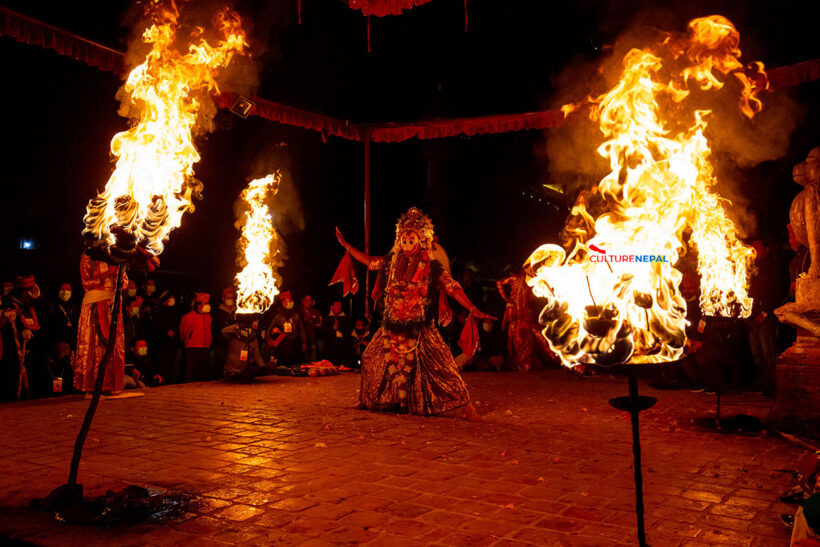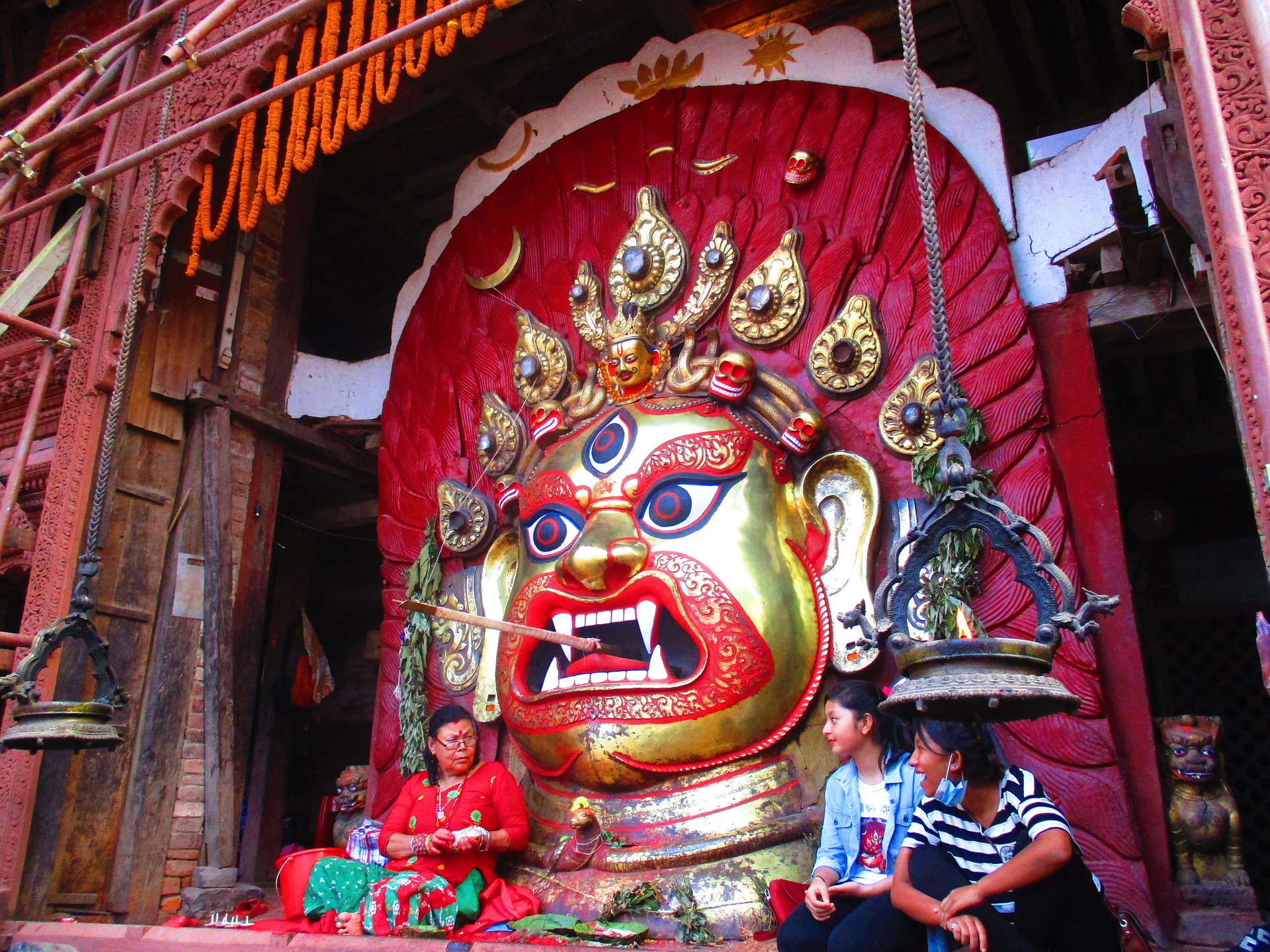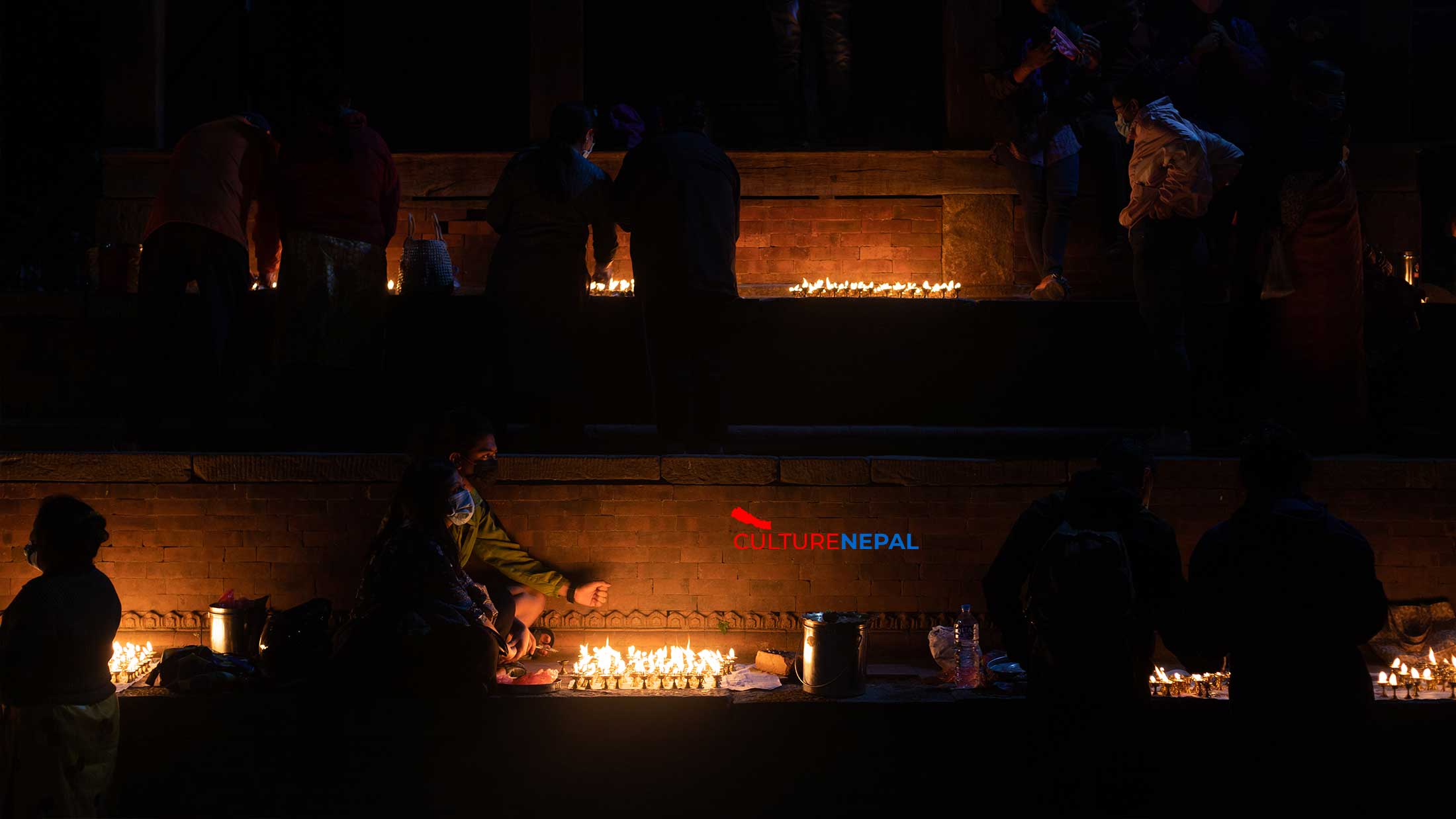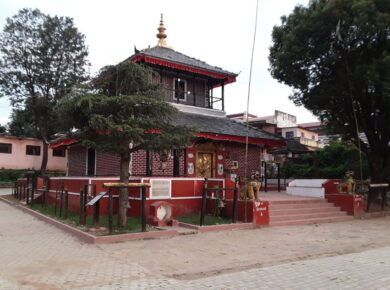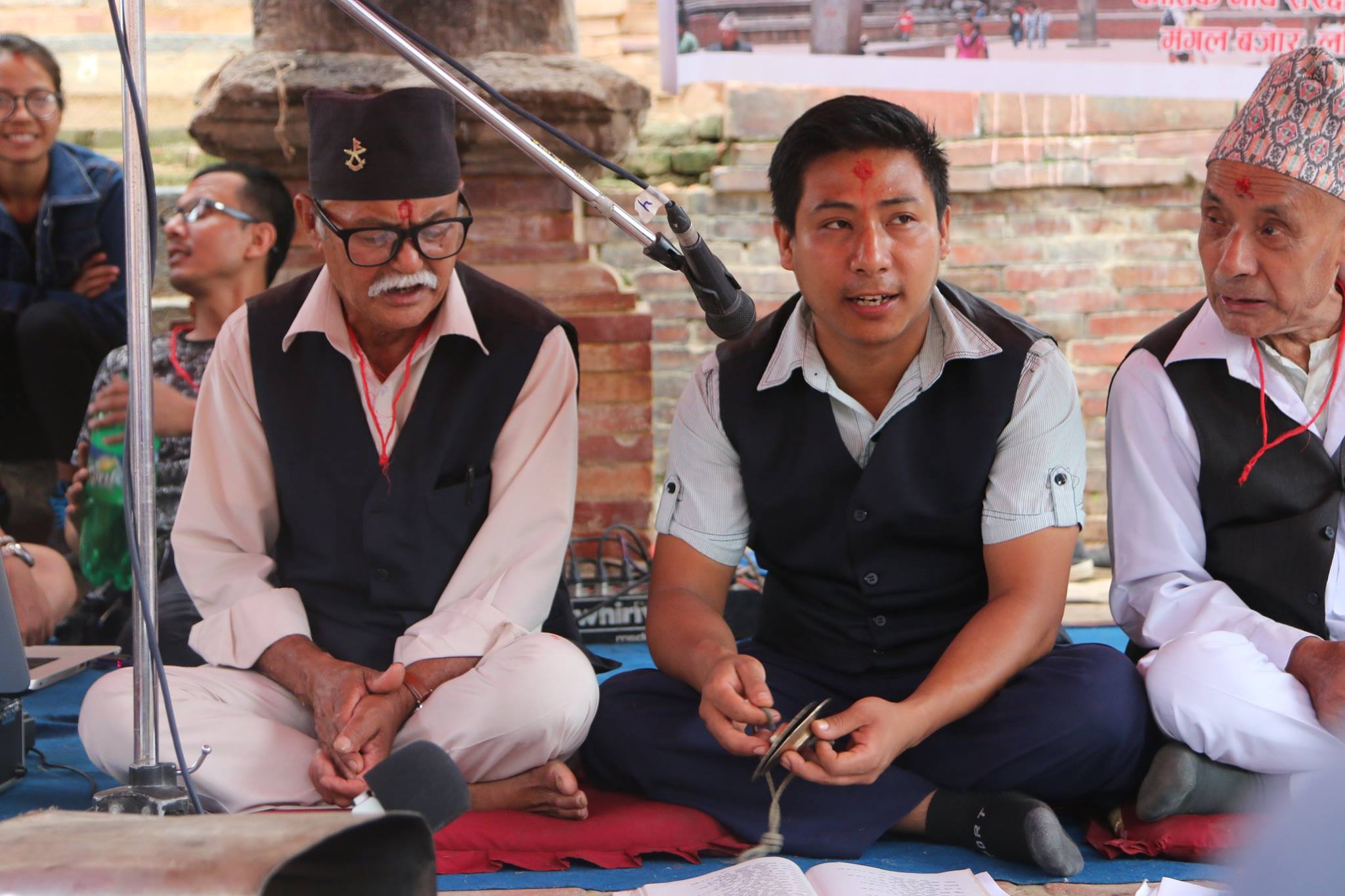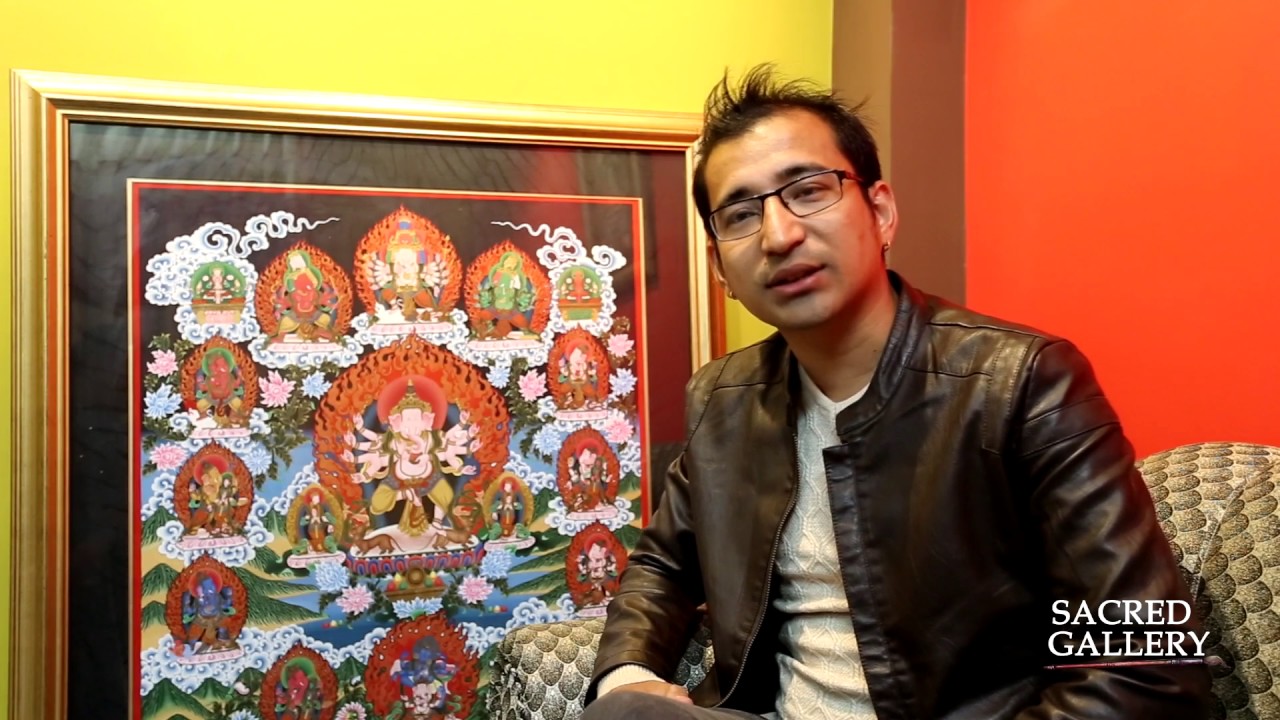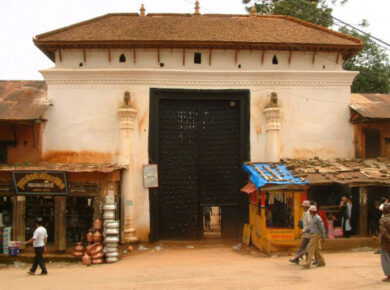One of the stories behind the inception of this dance festival goes like this. Malla King Siddhi Narsingh Malla wanted to revive a general feeling of happiness amongst the people of his land. After consultations with his gurus and pundits, it was decided that this happiness would have to come at the cost of a Narbali, or sacrificing a mortal to appease the gods. A seven day-long dance in the Nepali month of Kartik would follow this sacrifice.

The original plan was for various dances to be performed during the first seven days. On the concluding day of the festival, a man dressed up as Narsingh (Hindu god Vishnu disguised as a giant demon) would kill another man dressed up as Hiranyakashyap, an evil demon borrowed from Hindu mythology. This horrifying practice was carried out a few times before the absurdity of sacrificing one man to make others like him hap-py dawned on the King. Since then, the tradition has been continued through dances and drama, all based on the myths of Narsingh and Hiranya-kashyap, in front of the Krishna Mandir in Patan.
The seven days, as was originally planned, consist of high-energy demonstrations of an ancient art form by locals for whom the dance has been passed on from generations to generation.The final day’s performance begins on a high note. Various performances during the week now culminate in a final showdown between the wrathful. Narsingh and the demon god Hiranyakashyap.

Performed to the tune of traditional musical in-struments such as Jhokhi, Dha, Damokhi, Jonagada, Mridanga, Jhyali, Ta, Bhusiya, Pongga and Muwali, the dramatic climax comes as Narsingh closes in on Hiranyakashyap who has till then managed to save himself from the deity. Narsingh finally forces Hiranyakashyap into a corner. However, the very instance that Narsingh touch-es him, the dancer impersonating Hiranyakaship, quite incredibly loses consciousness and collapses to the ground, only to regain consciousness after . five days. How in a time of science and technology, such a feat is still achieved is simply astonishing.
It is believed that all five masks used by Narsingh are buried in front of the Narsingh Dewal. The first mask used was considered to be very powerful with strong tantrik spells that could kill the man disguised as Hiranyakashyap. Therefore, the mask underwent changes many times. The present mask, brought as the sixth substitute, has enough power to make the dancer disguised as Hiranyakashyap fall unconscious. It is also believed that the power of the present one has diminished, causing no chronic harm to the dancer.
According to religious texts however, Narsingh forces the demon lord to his knees, squatting all the while on the threshold. While doing that, he’s neither completely inside nor outside; neither completely human nor completely animal but both. In this way, Narsingh fulfills the conditions required to be able to kill the demon lord who was favored by Lord Brahma.

The answer to whether or not this festival made the people of 17th century Nepal happy is some-thing that they took to their deathbeds. What is certain is that, the annual event surely lets members of the audience lose themselves happily to a festival that was intended to make people happy. And that, is one of the prime purposes of art and the answer to why the festival remains apt for present time.
Source: Traveltimes, December 2010 Edition
Photos: Anuj Bajracharya
